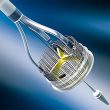This week is the 54th Chilean Congress of Cardiology and Cardiovascular Surgery. This event will take place from November 30th to December 3rd, 2017, in Santiago de Chile. The 2nd Latin American Symposium of Cardiovascular Disease in Women, the 2017 Course for Non-Specialist Physicians, and the Module on Ecocardiography for Anesthesiologists are among the highlights<a href="https://solaci.org/en/2017/11/29/solaci-symposium-at-the-chilean-society-of-cardiology-congress/" title="Read more" >...</a>
Balloon Angioplasty: A Reasonable Plan B for Chronic Thromboembolic Hypertension
Thromboembolic pulmonary hypertension is caused by pulmonary artery stenosis caused by organized thrombi. The only treatment potentially healing for this disease is surgical thrombectomy. However, patients with lesions in very peripheral branches or high surgical risk patients with comorbidities might benefit from a plan B, such as balloon pulmonary angioplasty. The percentage of patients with chronic<a href="https://solaci.org/en/2017/11/27/balloon-angioplasty-a-reasonable-plan-b-for-chronic-thromboembolic-hypertension/" title="Read more" >...</a>
Angioplasty Complexity May Define the Duration of Dual Antiplatelet Therapy
The DAPT study concluded that continued thienopyridine plus aspirin beyond a year after coronary angioplasty is associated with a decrease in the rate of stent thrombosis and major cardiovascular events. In contrast, there is a significant increase in moderate to severe bleeding when compared with continued aspirin alone. Based on the outcomes of this and<a href="https://solaci.org/en/2017/11/21/angioplasty-complexity-may-define-the-duration-of-dual-antiplatelet-therapy/" title="Read more" >...</a>
MitraClip Procedure Can Be Performed without General Anesthesia
Courtesy of Dr. Carlos Fava. Avoiding general anesthesia in intervention procedures has the benefits of faster recovery and shorter hospitalization. This has been already analyzed in the context of TAVR, but not in MitraClip procedures. The present study analyzed 232 patients receiving the MitraClip. 76 of these procedures were done under general anesthesia (32.7%) and<a href="https://solaci.org/en/2017/10/27/mitraclip-procedure-can-be-performed-without-general-anesthesia/" title="Read more" >...</a>
The SOURCE 3 Confirms the Good Outcomes of the SAPIEN 3 at One Year Followup
Transcatheter aortic valve replacement (TAVR) was developed as a strategy to treat non-surgical aortic stenosis, and was later expanded to elderly patients at intermediate risk, because of increased operator experience (overcoming the learning curve) and improved devices. The present study presents the one year outcomes of the SOURCE 3 trial, the multicenter European registry of the<a href="https://solaci.org/en/2017/10/27/the-source-3-confirms-the-good-outcomes-of-the-sapien-3-at-one-year-followup/" title="Read more" >...</a>
Excellent Outcomes for the First Sirolimus Eluting Balloon Tested on Instent Restesosis
Much has been done since studies on conventional balloon angioplasty for BMS instent restenosis showed over 40% new revascularization. Drug eluting stents, aimed at improving this problem, have never achieved 0% restenosis, which is why technologies such as paclitaxel coated balloons have been developed, with reasonable efficacy (8% to 10% reinterventions rate for BMS restenosis and 17% to 23%<a href="https://solaci.org/en/2017/10/20/excellent-outcomes-for-the-first-sirolimus-eluting-balloon-tested-on-instent-restesosis/" title="Read more" >...</a>
REPRISE III: Need for Pacemaker and Paravalvular Leak with Lotus
A recent presentation at London Valves took a closer look at the REPRISE III trial as regards two points that generated much discussion, such as need for a pacemaker and paravalvular leak. REPRISE III had previously demonstrated that the Lotus is noninferior to first-generation CoreValve and Evolut R in terms of safety. Additionally, it proved to be superior<a href="https://solaci.org/en/2017/10/18/reprise-iii-need-for-pacemaker-and-paravalvular-leak-with-lotus/" title="Read more" >...</a>
Small Annulus: Should We Start Choosing the Valve?
Courtesy of Dr. Carlos Fava. A small annulus in patients with Severe Aortic Stenosis is a real challenge, since it is associated with post-surgical prosthesis patient mismatch (PPM), which negatively affects prosthesis duration and evolution. TAVR has become a good alternative strategy, with better hemodynamic profile and lower PPM incidence in this group. The present study included 246<a href="https://solaci.org/en/2017/10/17/small-annulus-should-we-start-choosing-the-valve/" title="Read more" >...</a>
Transcatheter Reduction or Surgery for Paravalvular Leak Repair?
Paravalvular leak is complication derived from incomplete sealing between the implanted prosthesis and the native annulus, which occurs in 5% of all patients who undergo mitral valve replacement and 10% of those who undergo transcatheter aortic valve replacement. This is the most frequent non-structural valve dysfunction. While mild leaks can be asymptomatic, moderate to severe<a href="https://solaci.org/en/2017/10/12/transcatheter-reduction-or-surgery-for-paravalvular-leak-repair/" title="Read more" >...</a>
Multivessel Disease and Severe Carotid Stenosis: How to Proceed
Myocardial revascularization surgery (CABG) is the most frequent of all cardiovascular surgeries and is still the gold standard to treat multivessel disease. Between 6 and 8% of these patients present concomitant carotid stenosis and it is associated with increased peri and post procedural stroke rates during and after surgery. To prevent carotid stenosis, either PCI or endarterectomy<a href="https://solaci.org/en/2017/10/11/multivessel-disease-and-severe-carotid-stenosis-how-to-proceed/" title="Read more" >...</a>









